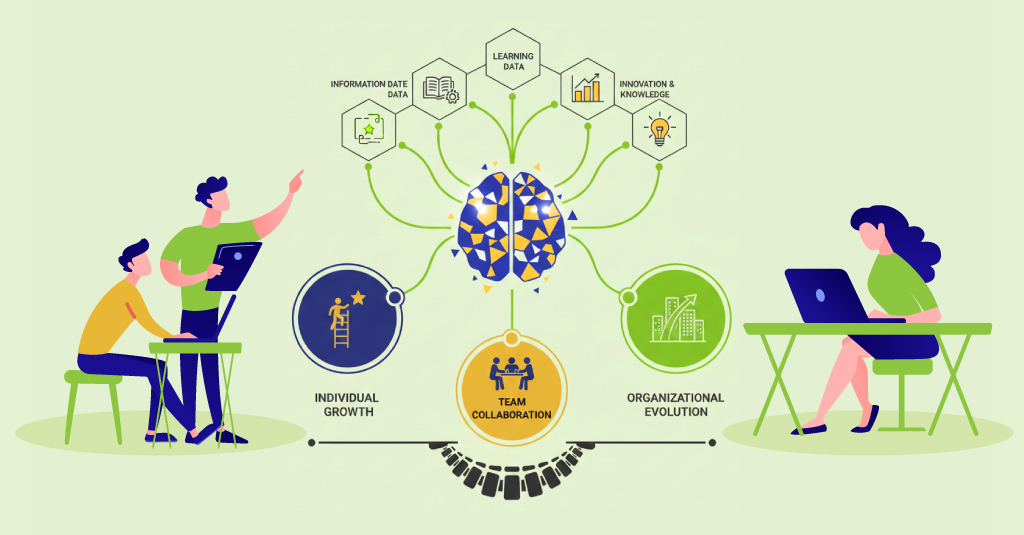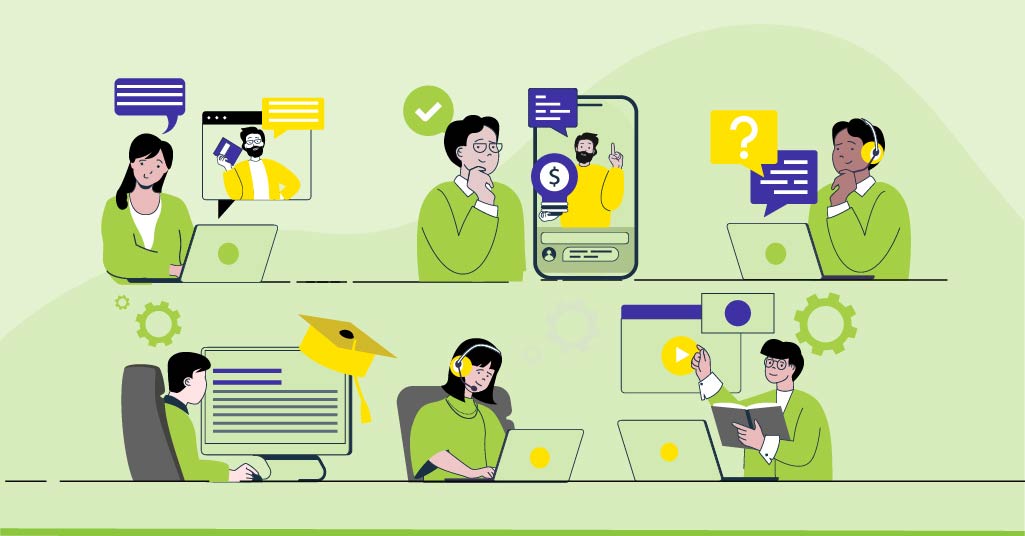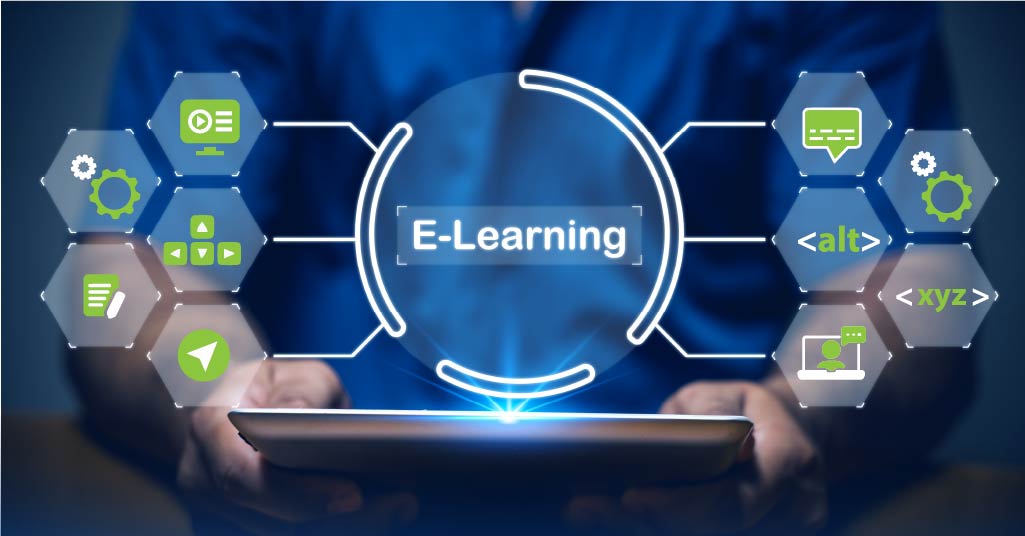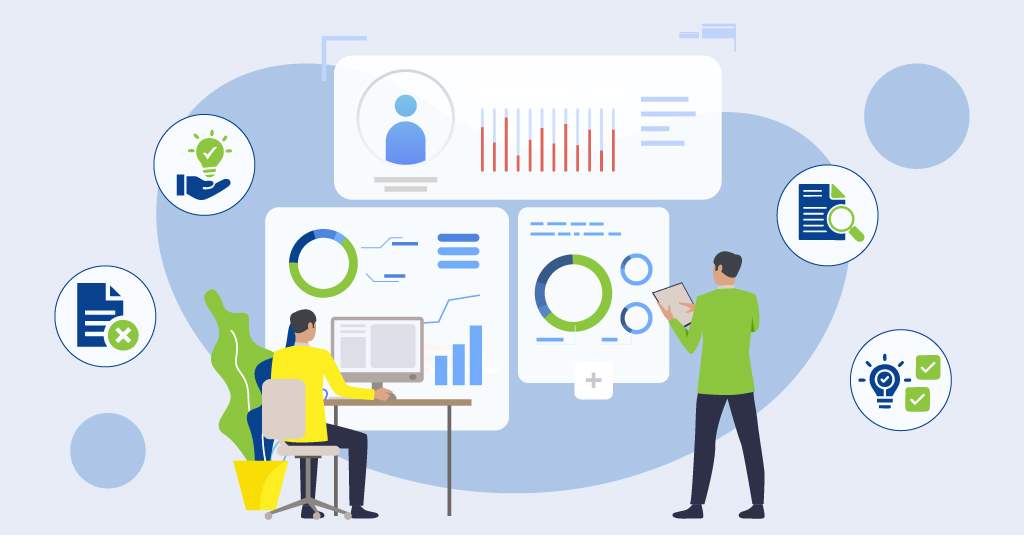It is increasingly clear that collecting volumes of learning metrics does not equate to building workforce capability.
In 2025, nearly 49% of learning and talent development professionals said their executives were concerned that employees lacked the right skills to execute business strategy.
Many organizations still record hours logged, courses completed, survey responses- but those remain peripheral if they do not link to intelligence skills. The shift required now is from recording activity to analyzing and acting on capability data.

Understanding Skills Data and Its Relevance
Skills data is essentially the organized record of what capabilities exist in the workforce, how those capabilities differ by role, and the level of proficiency employees can demonstrate at any given point.
Organizations often maintain learning analytics that capture completions and time spent, but less frequently track skill proficiency, contextual usage, or movement over time.
For example, a recent statistic indicates organizations using advanced learning analytics report 41% more accurate identification of skill gaps and 37% more effective training interventions.
When you shift to a skills-based view, you move from “did someone complete training” to “can someone perform in the required skill domain”. That shift matters because strategy depends on actual capability, not on activity logs.
L&D teams then have to work with HR and the business to define the skills tied to each role, set the proficiency markers, gather evidence from assessments, project work, and peer input, and route all of it into whatever analytics environment the organization uses.
Without that structure in place, the skills data ends up fragmented- plenty of learning entries, but very little that can support decisions. Organizations that fail to align their data architecture to role/skill frameworks find that their dashboards show activity but do not show readiness.

Turning Data into Intelligence: What This Requires
Collecting skills data is only the start. Intelligence is derived when data is analyzed, interpreted, and connected with business objectives. In 2026 and beyond, learning analytics must accomplish several tasks:
Map current capability levels across roles and functions.
- Link those capability levels to future business demands (skills-based development trajectories).
- Identify areas where current capability levels fall short of what the strategy requires.
- Propose focused development actions and track whether they shift proficiency in a meaningful way.
For instance, one enterprise mapped its engineering roles by skills in platform architecture, domain knowledge, and leadership for technical influence.
They layered that against their product roadmap and determined a high-risk zone where less than 15% of engineers were assessed as “advanced” in micro-services architecture.
They then designed pathways specifically for that skill, measured proficiency change, and reported capability uplift within six months. The difference between raw skills data and strategic intelligence lies in this link: from where we are, to where we must be, to how we get there.
The challenges to this approach are real.
One is data quality. If assessments are inconsistent, skills definitions vary across regions, or evidence is spotty; the resulting intelligence lacks credibility.
Another is forecasting: many organizations do not systematically project future skill demands, so intelligence remains reactive. A third is closing the loop: analytics identify gaps, but L&D often stops reporting; interventions and measurement of impact are sometimes secondary.
When the chain is intact- skills data feeds analytics, intelligence informs planning, interventions drive development- the L&D function becomes a strategic asset.
The shift from content-delivery to capability-building is then underpinned by measurable skill movement rather than training counts.

Embedding Skills-Based Development Within Strategy
Shifting toward skills-based development requires L&D to adjust how it functions. The work moves beyond producing learning material and toward aligning development with role expectations, skill demand, and outcomes that can actually be measured. In 2025, most organizations kept or raised their L&D budgets, and digital learning was noted by 94 percent of learning leaders as central to their overall strategy. That creates an opportunity but also implies the need for higher rigor.
Here are three practical pointers for L&D leaders:
-
Define a skills taxonomy aligned with role and business needs. Begin by reviewing business strategy, future product or service direction, and role profiles. Identify the skills that matter. Map proficiency levels. Make sure the definitions are concrete: what does “intermediate data literacy” mean in Product A vs Customer Service B? Without alignment, the data will be misled.
-
Design learning experiences for skill movement, not only exposure Once skills are defined and evidence mechanisms established, learning design should reflect it. Build assessments, scenario-based practice, and real-world projects. Track after training: did proficiency improve, did behavior change, did performance metrics shift? Learning analytics must capture more than completion.
-
Use intelligence to priorities and govern development investment Learning resources are finite. Skills intelligence helps point out which capability gaps matter most and where development work could make a real difference. It also needs a governance structure around it, with L&D, HR, and business teams working from the same framework, systems feeding data into one place, and regular reviews to keep everything aligned. The goal: spend where capability gaps intersect strategic priorities.
These pointers form the transition between collecting data and embedding intelligence, between designing, learning, and governing development. They help make L&D strategy operational, measurable, and aligned.

Upside Learning’s Role in Realizing This Shift
Upside Learning specializes in custom eLearning and development solutions. In the context of skills-based organizations, this capability becomes strategic. Most enterprises need solutions built around their own skills structure, not generic content libraries, because the development model has to match the organization’s taxonomy, evidence requirements, and data setup.
When Upside Learning starts working with a client, the first step is usually to make sense of the skills framework in place- how roles are arranged, which capabilities matter, and the level of proficiency expected across them. Then, content design and assessment instrumentation follow modules with embedded tasks, simulations, and practice scenarios.
Learning analytics are configured to feed into the skills-data architecture, so raw outputs (assessment scores, simulation responses, project outcomes) become inputs to intelligence.
Because Upside Learning builds custom rather than generic modules, it can align learning paths to enterprise-specific skills-based development agendas rather than generic training calendars. The design and analytics layers adapt to the organization’s taxonomy and operational context.
In effect, Upside Learning becomes part of how the organization operationalizes its intelligence skills.

What L&D Needs to Be Ready for in 2026
By 2026, the usual indicators- course completions, quick surveys, satisfaction scores– will not offer much insight, since organizations will be looked at through a capability lens. The attention shifts to whether roles evolve with business demands and whether the workforce can keep pace in practical terms. The pressure lands on L&D to show capability movement, not activity.
Key developments shaping 2026
-
Tighter integration between learning systems and the systems where work and performance occur, creating clearer lines of evidence.
-
Continuous proficiency tracking replaces isolated, once-off assessments, so skill movement becomes more visible over time.
-
Predictive analytics identifying capability risk zones earlier, especially in roles tied to revenue or operational stability.
-
Dynamic learning pathways that shift based on updated data, emerging priorities and signals from skills intelligence.
-
Stronger governance models ensuring development investment align with measurable business targets rather than static training calendars.
However, the transformation is not trivial. Enterprises must address legacy systems, unify data sources, align business-HR-L&D silos, and embed new workflows. Some progress will be incremental. But the direction is clear: a strategy that is skills-based and data-driven will become the standard.

Embedding Skills Intelligence into the Core
For organizations aiming to be truly capability-driven in 2026, the architecture of skills data and skills intelligence must sit at the core of the learning strategy. Without it, content delivery will continue, but capability building will remain elusive. Custom design, aligned taxonomies, integrated analytics, and governance are essential.
If your organization wishes to review how its learning ecosystem could better align around skills intelligence, you can reach out to Upside Learning today.
FAQs: Custom vs. Off-the-Shelf eLearning
If your workflows, tools, or brand vibe are one-of-a-kind- or if behavior change matters- custom’s your cheat code.
Yep, upfront it’s lighter on the wallet. But for long-term wins and role-specific skills? Custom flexes harder ROI.
For sure. Start with off-the-shelf for the basics, then sprinkle in custom modules where it really counts.
Depends on how ambitious you get- usually weeks to months. Planning ahead keeps you from sweating deadlines.
For general topics, yeah. For real-life scenarios or changing habits? Engagement can ghost you.
Totally. You own the content, so edits, tweaks, or upgrades? All yours.
Custom can adapt paths, toss in interactive exercises, and mix multimedia to match every brain type.
Mostly basic stuff- completion rates, quiz scores. Custom digs deeper: behavior, skill gaps, all the good analytics.
Quick wins? Off-the-shelf. Lasting change? Custom. Pick your lane- or flex both.
Yep. They make it seamless- fast deployment, tailored experiences, or a mashup.

Pick Smart, Train Better
Picking off-the-shelf or custom eLearning? Don’t stress. It’s really about your team, your goals, and the impact you want. Quick wins? Off-the-shelf has you covered. Role-specific skills or behavior change? Custom eLearning is your move.
Upside Learning makes both options effortless. Whether it’s ready-to-roll courses or fully tailored experiences, we handle the heavy lifting- interactive modules, adaptive paths, branded visuals, and analytics that tell you something. No wasted time, no generic content- just learning that sticks.
Ready to level up your team’s learning game? Connect with Upside Learning today and see how we make training fast, engaging, and results-driven. Your team deserves training that works- and we deliver.


















